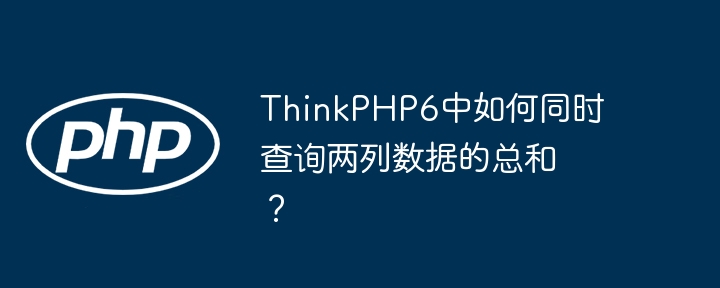在spring security中实现验证码登录的核心在于引入一个自定义的认证过滤器,其作用是拦截登录请求并验证验证码的有效性,确保用户名密码认证流程仅在验证码正确的情况下执行。1. 创建生成与存储验证码的控制器,用于生成验证码图片和文本,并将验证码文本存储于Session或分布式缓存如redis中;2. 实现自定义验证码认证过滤器,继承usernamepasswordauthenticationfilter,在attemptauthentication方法中校验用户提交的验证码与服务器端存储的验证码是否匹配,若不匹配则抛出异常并拒绝认证;3. 调整spring security配置,通过addfilterbefore方法将自定义过滤器插入到usernamepasswordauthenticationfilter之前,以确保验证码校验先于用户名密码认证执行。验证码的存在有效防止自动化攻击,提升了系统的安全性。

在spring security中实现验证码登录,核心在于引入一个自定义的认证过滤器(通常在用户名密码认证之前执行),它负责拦截登录请求,从请求中提取验证码并与服务器端存储的验证码进行比对。验证码通过后,请求才能继续流转到Spring Security内置的用户名密码认证流程;若验证码不匹配或已失效,则直接拒绝认证,并返回相应的错误信息。这个过程确保了在尝试实际的用户凭证认证之前,先完成一个初步的安全校验,有效抵御自动化攻击。

解决方案
要实现Spring Security的验证码登录,我们需要几个关键组件的协作:一个生成并存储验证码的控制器、一个自定义的认证过滤器来校验验证码,以及对Spring Security配置的相应调整。
-
验证码生成与存储: 创建一个restful接口,用于生成验证码图片和对应的文本。验证码文本通常存储在用户的Session中,或者对于前后端分离架构,可以存储在redis等分布式缓存中,并返回一个与验证码图片关联的唯一ID给前端。

// 简化示例,实际生产环境需更完善的验证码生成库 @RestController public class CaptchaController { @GetMapping("/captcha") public void generateCaptcha(HttpServletRequest request, HttpServletResponse response) throws IOException { response.setHeader("Cache-Control", "no-store, no-cache"); response.setContentType("image/jpeg"); // 生成随机验证码文本 String captchaText = generateRandomText(4); request.getSession().setAttribute("captcha", captchaText); // 存储在Session // 绘制图片并输出 BufferedImage image = drawCaptchaimage(captchaText); ImageIO.write(image, "jpeg", response.getOutputStream()); } private String generateRandomText(int length) { /* ... */ return "abcd"; } private BufferedImage drawCaptchaImage(String text) { /* ... */ return new BufferedImage(100, 40, BufferedImage.TYPE_INT_RGB); } }
-
自定义验证码认证过滤器: 这个过滤器需要继承UsernamePasswordAuthenticationFilter或者AbstractAuthenticationProcessingFilter,并在attemptAuthentication方法中加入验证码校验逻辑。
public class CaptchaAuthenticationFilter extends UsernamePasswordAuthenticationFilter { private String captchaParameter = "captcha"; // 登录请求中验证码的参数名 public CaptchaAuthenticationFilter() { // 设置默认的认证请求URL,通常与表单登录处理URL一致 setFilterProcessesUrl("/login"); } @Override public Authentication attemptAuthentication(HttpServletRequest request, HttpServletResponse response) throws AuthenticationException { // 确保是POST请求,防止GET请求触发认证 if (!request.getMethod().equals("POST")) { throw new AuthenticationServiceException("Authentication method not supported: " + request.getMethod()); } // 获取用户提交的验证码 String submittedCaptcha = obtainCaptcha(request); // 获取Session中存储的验证码 String storedCaptcha = (String) request.getSession().getAttribute("captcha"); // 校验验证码 if (submittedCaptcha == null || !submittedCaptcha.equalsIgnoreCase(storedCaptcha)) { // 清除Session中的验证码,防止重复使用 request.getSession().removeAttribute("captcha"); throw new BadCredentialsException("验证码不正确或已失效"); } // 验证码通过,清除Session中的验证码 request.getSession().removeAttribute("captcha"); // 继续父类的认证流程(用户名密码认证) return super.attemptAuthentication(request, response); } protected String obtainCaptcha(HttpServletRequest request) { return request.getParameter(captchaParameter); } public void setCaptchaParameter(String captchaParameter) { this.captchaParameter = captchaParameter; } } -
Spring Security配置: 将自定义的CaptchaAuthenticationFilter添加到Spring Security的过滤链中,通常放在UsernamePasswordAuthenticationFilter之前。

@Configuration @EnableWebSecurity public class SecurityConfig extends WebSecurityConfigurerAdapter { @Autowired private UserDetailsService userDetailsService; // 你的用户服务 @Bean public PasswordEncoder passwordEncoder() { return new BCryptPasswordEncoder(); } @Override protected void configure(HttpSecurity http) throws Exception { // 实例化自定义过滤器,并设置认证管理器 CaptchaAuthenticationFilter captchaAuthenticationFilter = new CaptchaAuthenticationFilter(); captchaAuthenticationFilter.setAuthenticationManager(authenticationManagerBean()); // 设置认证成功/失败处理器 captchaAuthenticationFilter.setAuthenticationSuccessHandler(new SimpleUrlAuthenticationSuccessHandler("/index")); captchaAuthenticationFilter.setAuthenticationFailureHandler(new SimpleUrlAuthenticationFailureHandler("/login?error")); http .authorizeRequests() .antMatchers("/login", "/captcha", "/css/**", "/js/**").permitAll() // 允许访问登录页、验证码接口等 .anyRequest().authenticated() // 其他所有请求都需要认证 .and() .formLogin() .loginPage("/login") // 自定义登录页 .loginProcessingUrl("/login") // 处理登录请求的URL .permitAll() .and() .addFilterBefore(captchaAuthenticationFilter, UsernamePasswordAuthenticationFilter.class) // 将自定义过滤器添加到UsernamePasswordAuthenticationFilter之前 .csrf().disable(); // 实际项目中CSRF保护不应禁用,这里为简化示例 } @Override protected void configure(AuthenticationManagerBuilder auth) throws Exception { auth.userDetailsService(userDetailsService).passwordEncoder(passwordEncoder()); } @Bean @Override public AuthenticationManager authenticationManagerBean() throws Exception { return super.authenticationManagerBean(); } }
为什么传统的用户名密码登录需要加上验证码?
说实话,这就像给家门多加了一道锁,虽然麻烦点,但能挡住不少不怀好意的家伙。传统的用户名密码登录方式,在面对自动化工具和脚本时显得非常脆弱。想象一下,一个机器人可以毫不停歇地尝试成千上万个密码组合,或者利用泄露的用户名列表去“撞库”。这种情况下,没有验证码的防护,你的用户账户安全风险会急剧上升。
验证码的存在,主要就是为了区分操作者是“人”还是“机器”。它引入了一个机器难以自动化识别和处理的环节,比如识别扭曲的字符、点击特定的图片区域,或者进行简单的数学运算。这使得那些旨在暴力破解、撞库攻击、垃圾注册或批量灌水的自动化脚本寸步难行。当然,验证码本身也在不断演进,从最初的字符识别到现在的行为验证、滑块验证,目的都是为了在不给正常用户带来过多困扰的前提下,尽可能地提高机器识别的门槛。从我个人的经验来看,虽然有时会觉得验证码有点烦,但考虑到它在阻止恶意行为上的作用,这种“烦恼”还是值得的。
Spring Security中如何优雅地集成验证码校验逻辑?
在Spring Security里集成验证码校验,我觉得最“优雅”的方式,就是把它作为一个前置的认证步骤,而不是揉进核心的用户认证逻辑里。这样设计,既能保持Spring Security核心认证流程的纯粹性,又能灵活地插入我们自己的安全校验。
具体来说,关键在于自定义一个认证过滤器。这个过滤器要放在Spring Security默认的UsernamePasswordAuthenticationFilter之前。为什么是之前?因为我们希望在用户名和密码被Spring Security的AuthenticationManager处理之前,就先完成验证码的校验。如果验证码都不对,那根本没必要去数据库里比对用户名密码了,直接就打回去了,这能有效减轻后端认证服务的压力,也避免了不必要的数据库查询。
这个自定义过滤器会从请求中拿到用户输入的验证码,然后去和服务器端(比如Session或redis)存储的正确验证码进行比对。如果比对失败,它就直接抛出一个AuthenticationException,比如BadCredentialsException或者AuthenticationServiceException,这样Spring Security的认证失败处理器就能捕获到,并给用户返回一个明确的错误提示,比如“验证码错误”。如果验证码校验通过,过滤器就放行请求,让它继续流转到Spring Security的下一个过滤器,最终由UsernamePasswordAuthenticationFilter来处理用户名和密码的认证。
这种做法的好处是,验证码校验逻辑与Spring Security的认证核心解耦,我们可以根据需要更换验证码的实现方式(比如从图片验证码换成滑块验证码),而无需改动Spring Security的底层配置。同时,通过addFilterBefore方法,我们能精确控制这个自定义过滤器在整个安全链中的位置,确保它在最合适的时候发挥作用。
验证码失效或校验失败后,用户体验和错误处理应该如何优化?
没人喜欢看到一个冷冰冰的“登录失败”提示,尤其是在验证码输错的时候。优化用户体验和错误处理,是让用户觉得你的系统更“人性化”的关键。
当验证码失效或校验失败时,首先要做的是给出明确的错误信息。比如,不是简单地提示“登录失败”,而是明确告知“验证码错误”或“验证码已失效,请重新获取”。这能立即帮助用户定位问题,避免他们反复尝试错误的用户名密码。
在前端,一旦验证码校验失败,应该自动刷新验证码图片,让用户无需手动点击刷新按钮。这是一种细微但很重要的用户体验优化。同时,如果验证码是有时效性的(比如3分钟),可以在前端显示一个倒计时,提醒用户验证码即将过期,或者在过期前自动刷新。
在后端,除了抛出AuthenticationException,我们还可以利用Spring Security提供的AuthenticationFailureHandler接口来定制认证失败后的处理逻辑。在这个处理器中,我们可以根据异常类型(比如我们自定义的验证码异常)来决定跳转到哪个页面,或者返回什么样的json响应。例如,对于ajax登录请求,我们可以返回一个包含错误代码和消息的JSON对象,前端根据这个JSON来更新UI,显示具体的错误信息。
此外,为了防止恶意用户通过不断提交错误的验证码来消耗服务器资源,可以考虑在验证码校验失败达到一定次数后,对该IP地址或用户进行短时间的锁定或限流。这是一种额外的安全防护措施,虽然可能对个别手残党不太友好,但对于系统整体的健壮性是很有帮助的。总的来说,错误处理不仅仅是抛出异常,更要思考如何通过友好的反馈和恰当的策略,引导用户完成操作,同时保障系统安全。

















